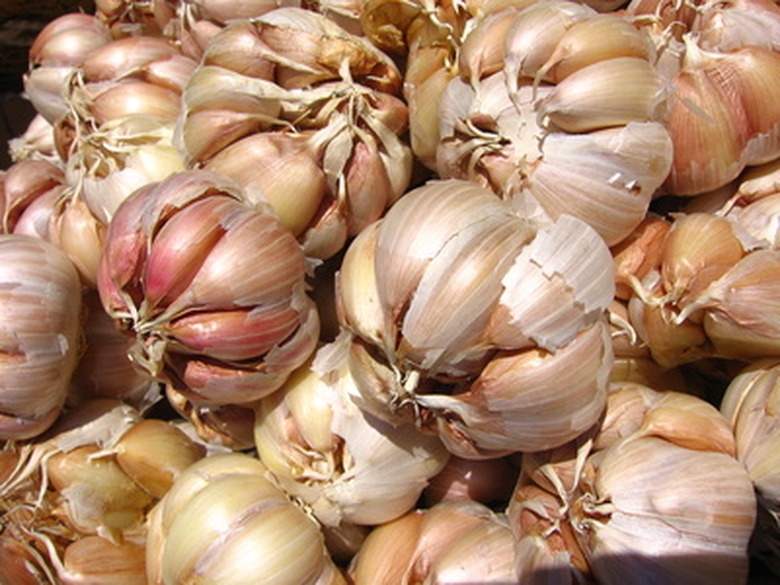How To Plant & Fertilize Garlic Correctly
Things Needed
- Compost
- Fertilizer
- Tiller
- Mulch
- Garden fork
Garlic is not grown from true seed. Instead, individual cloves are separated from the edible garlic bulb and planted in the garden. You can purchase these cloves, called seed garlic, in autumn, or you can save some of the largest cloves from your last garlic crop for replanting in the home garden. Garlic is planted in the fall before the ground freezes, then harvested the following summer when the bulbs are at full size. Properly planting and fertilizing the garlic ensures the crops are the best they can be.
Step 1
Lay a 2-inch layer of compost over a well-drained, full-sun garden bed. Apply 3 lbs. of 10-10-10 analysis fertilizer per every 100 square feet of bed, then till both the compost and the fertilizer into the top 6 inches of soil.
- Garlic is not grown from true seed.
- Instead, individual cloves are separated from the edible garlic bulb and planted in the garden.
Step 2
Push each clove into the soil, pointed side facing up, until the top of the clove is approximately 1 to 2 inches beneath soil level. Space the cloves 3 to 6 inches apart in the row, with rows spaced 2 to 3 feet apart.
Step 3
Water the bed after planting until it is moist but not soggy. Water as needed when the ground isn't frozen, keeping the soil moist.
Step 4
Cover the bed with a 3- to 4-inch layer of straw mulch after planting. Mulch prevents weeds, preserves moisture and protects the garlic from winter cold.
Step 5
Harvest garlic in mid- to late summer when the foliage yellows and dries. Dig up the bulbs with a garden fork, as pulling them may damage the bulbs.
- Push each clove into the soil, pointed side facing up, until the top of the clove is approximately 1 to 2 inches beneath soil level.
- Water the bed after planting until it is moist but not soggy.
Tip
Plant garlic six weeks before the first expected fall frost. This gives the cloves a chance to begin sending out roots before the ground freezes. In areas with mild winters, plant garlic in late winter or early spring instead.
Warning
If spring is particularly wet and cold, it is necessary to remove the mulch. Otherwise, the soil will not warm and dry enough for the garlic to develop properly.
